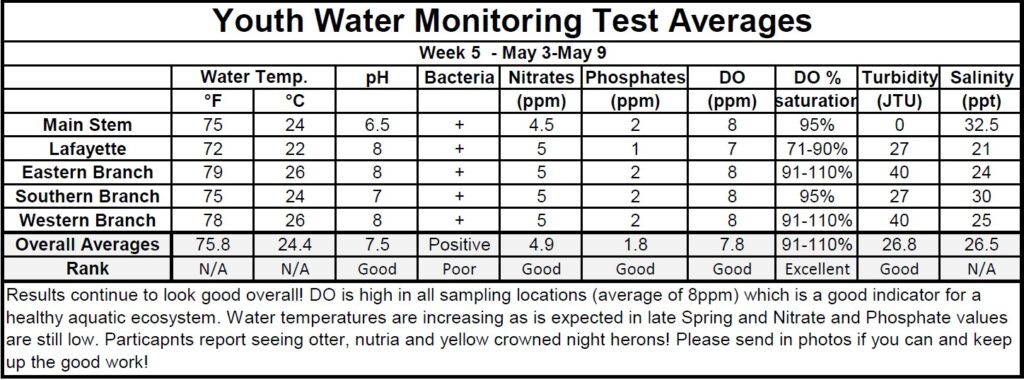Follow the links below to see National Oceanic and Atmospheric Administration (NOAA)’s results. Once on the page, select “decoded data” for more details.
Check what you measure! TW = temperature, WS = salinity, WO = dissolved oxygen (ppm), WX = dissolved oxygen % saturation, HM = tide height, WP = pH, WT = turbidity

Fecal coliform bacteria comes from both wild animals and domestic pets and washes into the river with stormwater and flooding. That’s why it’s so important for pet owners to scoop the poop!
A healthy level of breathable water for the river’s marine life is 4 parts per million or above.
Nitrates and phosphates are important nutrients for many plants and animals; however, too much of either can be harmful. Landscape fertilizer runoff creates algae blooms that decrease the dissolved oxygen marine life needs. A healthy level in the Elizabeth River is under 5 parts per million for nitrates and 4 parts per million for phosphates.
Notifications